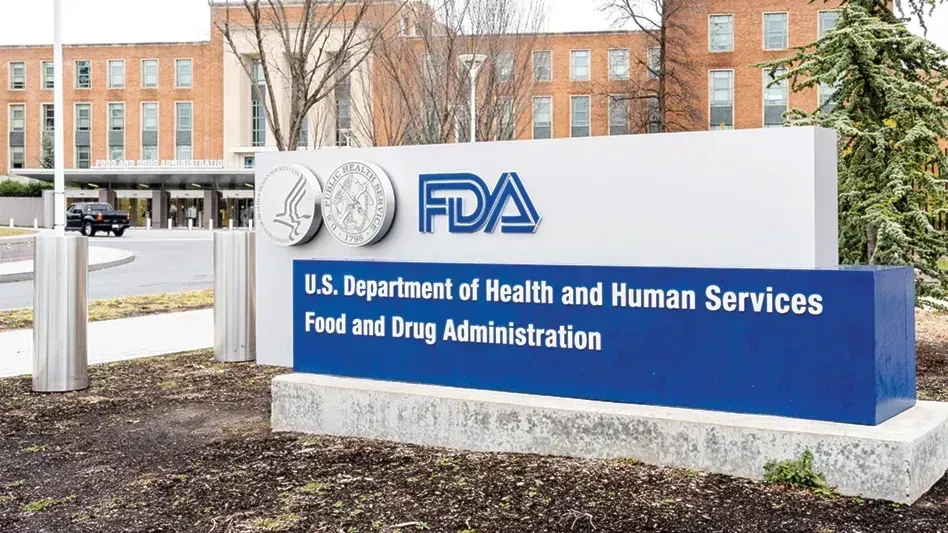 While many food industry firms are enraptured with the promotional power of social media, they also need to grasp its perilous dark side—and its ability to damage or destroy a business with a few, choice mouse clicks.
While many food industry firms are enraptured with the promotional power of social media, they also need to grasp its perilous dark side—and its ability to damage or destroy a business with a few, choice mouse clicks.
Domino's Pizza learned this lesson the hard way when a video depicting its employees smearing mucus on sandwiches was posted—and went viral—on YouTube. The site is the number one destination for swapping and talking about videos on the web.
The Domino's video, a staged joke by two of its employees, was tossed up on YouTube as a lark.
For Domino's, it was anything but.
Within days, the reputation-tarnisher was viewed more than a million times, became a topic du jour on Twitter, and showed up numerous times in the top ten Google search returns for keyword "Domino's."
"It sickens me that the actions of two individuals could impact our great system," said Patrick Doyle, Domino's president, who made his apology about the incident in a video that Domino's posted on YouTube.
Bruce Arnold, founder of Caslon Analytics, a web marketing firm that counsels clients on managing company reputations online, said no company, and no industry, is safe from social media sites like YouTube, Facebook, Myspace, and the like.
"Some (posts) are little more than a repository for juvenile humor: graffiti, comments that "X" is the devil, animations of creatures urinating on the corporate logo," Arnold said. "Others feature detailed and sometimes persuasive critiques, including 'insider' documentation, and are associated with newsgroups.
"Financial analysts have attributed falling share prices to particular campaigns, noting that some domains claim a regular audience of 20 to 50 thousand visitors, and that information on those sites has been accepted and echoed by the mainstream media," he added.
Protecting Your Brand. For food industry firms, the take-way from Domino's is to proactively develop a reputation management strategy before such an incident occurs, and be ready to pounce when a silly joke—or worse—threatens to go viral on your company.
"Social media has become the primary place where people go to give and seek honest feedback; we want to make sure we are tuned into that," said Chris Brandon, manager of public relations and events at Domino's. "I think anyone who has followed Domino's of recent knows that within the forum, we are listening, learning, and responding."
Dana Martin Sandeman, supervisor, social media at McDonald's added, "We know our consumers are talking about our brand and believe it's important to demonstrate that we are listening and care about their feedback. Additionally, we have developed an online issues management process to help guide our decisions on how, when, and where to respond to issues."
Indeed, according to a recent study from the Aberdeen Group, companies that embrace a reputation management strategy not only guard their brand, they're also much more likely to increase shareholder value as compared to companies that ignore the social media space.
Specifically, the report, "Brand Reputation Management: Using Online Monitoring to Protect the Company's Crown Jewels," found that companies with top-notch reputation management plans are more than 12 times more likely to increase shareholder value year-over-year than tone-deaf counterparts.
"The benefits of online monitoring and analysis in the context of brand reputation management are clear and compelling," said Jeff Zabin, the report's author and a research fellow at Aberdeen.
Such a monitoring strategy, web marketing experts say, needs to encompass social media in all its forms, including video sites, social networking sites, and micro-blogging services.
Fortunately, there are a number of tools and service providers that companies can use to protect brand image.
Do It Yourself. One of the easiest ways to secure a general idea about what's being said about your company on the web is to monitor the major online communities, mailing lists, and blogs—all places where those looking to shape public opinion tend to congregate.
The quickest way to begin the process is to sign up for Google Alerts (www.google.com/alerts), which enables you to track mentions of your business name, including mentions on YouTube.
You'll also want to sign up for an account on Twitter, the micro-blogging service, which you can use to monitor the posts there. Signing up for an account will also prevent someone else—including a dissatisfied customer—from grabbing your brand name, and masquerading as a representative.
"On average, McDonald's is mentioned every 10 to 30 seconds on Twitter, and of those mentions, there are literally hundreds of opportunities for the brand to engage in a transparent dialogue with customers," said McDonald's Sandeman, who is extremely plugged in to Twitter. "Additionally, our Twitter team receives approximately 2,000 @ replies each week.
One caution: if a company representative does begin to post on Twitter for your brand, make sure he or she knows the neighborhood. Essentially, you need to be transparent. You can't hide. You can't be disingenuous. If you are not transparent, you are likely to be found out, and experience a backlash. You only get one chance to be who you really are.
Meanwhile, posts on web blogs, which Sandeman noted as the modern day answer to personal journals, can be tracked with the free blogwatch service Technorati (www.technorati.com), which has been around since the blog phenomena went large. Technorati monitors what's being said in this space, and keeps track of newly created blogs.
BoardTracker.com (www.boardtracker.com), a free service that monitors buzz on the countless discussion boards on the web, provides another essential do-it-yourself tool.
It's also a good idea to keep tabs on anything that may be cropping up about your company on podcasts—the grassroots, often homemade radio-show type productions on the Web. PodcastAlley (www.podcastalley.com) is one provider that offers an overview of what's going on in the podcast world.
Other free reputation management tools include BlogPulse (www.blogpulse.com), which also tracks blog posts; Keotag (www.keotag.com), which tracks keywords, including company names, that are being used as tags on the web; SeekingAlpha (www.seekingalpha.com/tag/transcripts), which tracks the postings of conference call transcripts on web sites; Yahoo's Upcoming (www.upcoming.yahoo.com), which tracks notices of upcoming new conferences by keyword; Google Trends (www.google.com/trends), which tracks the most popular keyword searches on the web; and Compete (www.searchanalytics.compete.com/site_referrals/), which tracks the top web site referrals for any keyword search.
Service Providers. If do-it-yourself daily monitoring becomes overwhelming, you may want to try other provider services, which provide a range of options such as:
- monitoring blog postings containing your company's name and/or other keywords, and sending you daily reports about those postings via email.
- offering tools to ensure you'll receive fewer alerts about posts you consider irrelevant.
- maintaining a "digital clip book" to which your company representatives can refer to when necessary.
- providing a "web clipping" service to track what's being said about your company on the web, keep you apprised of competitors' activities, and send out alerts about copyright or trademark abuses.
- auto-monitoring blogs with human analysis. Some provider software is programmed to include analysis of "natural language," enabling you to find positive or negative posts about your company, even if those posts are rendered in poor grammar.
- providing comprehensive services that monitor your brand across virtually all media, tracking company mentions in mainstream media, radio and TV, as well as web posts, blogs, and comments in discussion groups.
- utilizing reputation analysis tools to automatically sift through all the mentions of your company, report on potential problem areas, and graph the public opinion data for ease of interpretation.
"We are utilizing social media more than ever before—whether a live Twitter feed (PizzaTurnaround.com), our NCAA bracket program on Facebook, or simply our day-to-day interaction with fans," Brandon said. "It is a venue that has become extremely important to us in generating relationships, as well as monitoring feedback."
The author is contributing writer to QA magazine based in Holbrook, N.Y.
Get curated news on YOUR industry.
Enter your email to receive our newsletters.
Explore the December 2011 Issue
Check out more from this issue and find your next story to read.
Latest from Quality Assurance & Food Safety
- Penn State Course Covers Fundamentals of Food Science
- Joint FAO/WHO Expert Committee on Food Additives Seeks Experts
- FDA Reschedules Webinar on Updated ‘Healthy’ Claim
- Thousands More Laid Off at FDA, CDC in HHS Restructuring
- USDA Extends Deadline on Request for Information for Poultry Quality Standards
- Dessert Holdings Issues Allergy Alert on Undeclared Pecans in Favorite Day Cheesecake
- Idaho Smokehouse Partners Recalls Beef Sticks Due to Possible Foreign Matter Contamination
- IDFA Leadership Symposium Set for June 23-26






